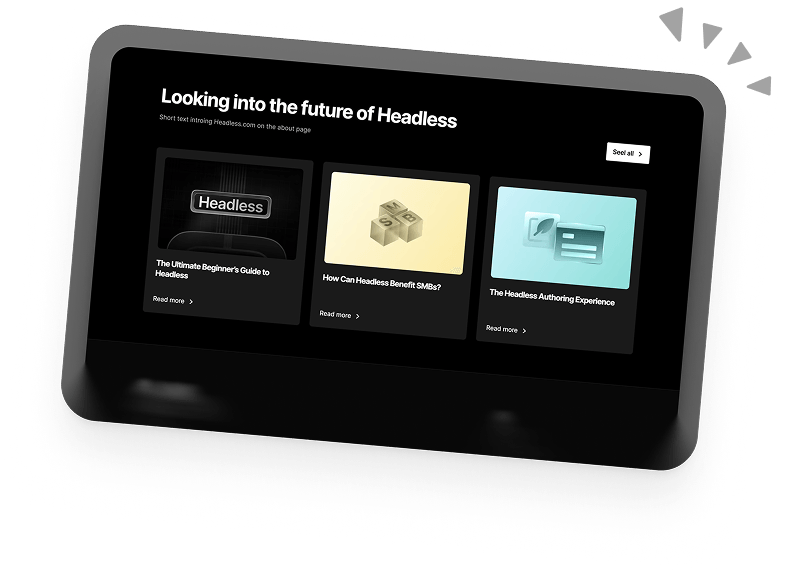Enterprise Web Development: Everything You Need to Know
Having a strong online presence is essential for enterprise companies to stay competitive and reach their target audience. But, when it comes to enterprise web development, things can get a little tricky. Large businesses need to cater to the changing needs of a vast customer base. And they have to do this while managing large teams of employees, bigger sites with heavy traffic, and maintaining their presence across multiple channels.
Building websites for enterprise organisations is not an easy task. It requires a development team who can understand and navigate the unique issues involved with enterprise-level websites.
In this article, we’ll look at what exactly enterprise web development is, what makes enterprise sites so different from other sites, and the challenges that come with this type of development.
Let’s get to it.
What is Enterprise Web Development?
First things first, let’s define enterprise web development.
Enterprise web development is the process of designing, building, and maintaining websites, applications, and software for large-scale organisations. It’s the big league of web development. The stakes are higher and the challenges are more complex and intricate.
Building websites for enterprises means dealing with:
- larger amounts of data
- higher volumes of traffic
- complex functionalities
- integrations with other systems
- multiple channels
What does an Enterprise website need?
Now let’s take a closer look at what you need for an effective enterprise website.
- Advanced integrations
Enterprises need a lot more functionality from their websites, whether that’s through third-party or custom-built tools. And, as companies focus more and more on omnichannel customer experiences, they need to integrate data analytics, CRM tools, mobile apps, and IoT devices into their system.
- Branding across multiple channels
As omnichannel experiences become more and more relevant, companies need to keep a consistent brand presence across all their different channels.
To achieve this, developers and designers have to work with strict brand guidelines and design systems to make sure the brand’s presence remains cohesive on all their platforms.
- Scalability
An enterprise website needs to handle large amounts of traffic. And as your company grows, your website will need to keep up with a growing user base.
Enterprise websites need to be built with scalability in mind to ensure they can manage peak traffic loads and accommodate future growth.
- Security
The bigger the website, the more data it holds. The more data it holds, the more attractive a target it becomes for hackers.
Enterprise websites need high levels of security to maintain users’ privacy, prevent downtime, and show themselves to be trustworthy to their users.
To achieve this, websites need to be built with a robust security architecture with advanced encryption, Web Application Firewalls (WAF), controlled user permissions, regular data backups, security audits, vulnerability scanning, network segmentation, API security measures, and employee training.
- An enterprise CMS
To manage all these features, you’ll need a CMS that is designed to handle enterprise-level projects. Choosing an enterprise CMS will depend on what your company’s needs and goals are. You’ll also need to spend some time getting the system set up and configured to your exact specifications.
To learn more about this topic, take a look at our guide: “How to Choose an Enterprise CMS”.
Challenges in Enterprise Website Design and Development
Building an enterprise website is a large and complex undertaking that comes with a unique set of challenges.
Enterprise web development can be complex and resource intensive
While you can make a small business website with a simple website builder, the process gets more complicated the bigger your company gets. For enterprise organisations, this means their websites often require custom development and coding to achieve the necessary scalability, security, and performance.
The use of custom development technology in enterprise web development often leads to higher development costs and longer development times.
Managing project requirements
Working on these kinds of large-scale development projects means working with a number of stakeholders.
Different internal teams will have their own ideas and requirements for the site. For example, you could be working with the vision of senior management alongside the marketing team’s strategy, the sales team, and also manage the backend editorial experience.
Since so many people can be involved in the project, you need to establish a communicative and collaborative environment.
In the planning stages, find a clear and unifying vision for the website or application and make sure you are all working towards it. Try to avoid a “too many cooks in the kitchen” situation and rather aim for a “many hands make light work” atmosphere.
On top of the stakeholder expectations, managing this type of project also means navigating budget constraints, tight deadlines, and resource limitations.
Integrating Legacy Systems
Many enterprises rely on older legacy systems to power their business.
But with the exponential rate of innovation in web development, companies find themselves needing to upgrade their outdated systems.
So, for an innovative enterprise website, developers may need to merge new tools and functionality with the existing system. This will require a solid understanding of the legacy systems and the ability to create workarounds for compatibility issues.
Maintaining Website Performance
Your website’s performance is an essential part of your user experience, SEO, and conversion potential. But with an enterprise website, you’re dealing with lots more content, as well as advanced functions that can really weigh down a site’s load speed.
Striking a balance between delivering a visually impressive, interactive website while still achieving fast load times and responsiveness is quite difficult, especially at scale.
Staying Ahead of the Technology Curve
In the fast-paced digital landscape, staying ahead of the technology curve is a major challenge for enterprises. As technology evolves rapidly, it can be difficult to ensure that your website remains up-to-date and relevant.
With new web development frameworks, libraries, and tools emerging, you need to find the most suitable technologies for your website while avoiding those that may become obsolete.
Crucially, companies need to keep up with the rapid evolution of user experience (UX) trends and design principles to make sure their website offers a modern and user-centric experience.
In A Nutshell
Building a website for an enterprise-level company is a complex task that requires a lot of careful planning and development resources. If you need assistance or advice with your project, then feel free to get in touch with us and we’ll help with all your enterprise development needs!
Book a 30-min Introduction Call
Let's jump on a quick intro call We'll break down your project, and pinpoint exactly how we can help.



Our clients  Holaa! love working with us see their stories below!
Holaa! love working with us see their stories below!






